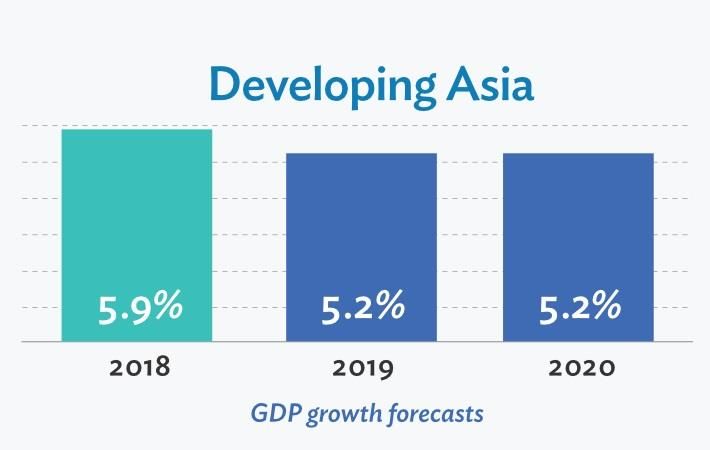
ADB's September forecast was gross domestic product (GDP) in the Asian region to be 5.4 per cent in 2019 and 5.5 per cent for 2020.
“While growth rates are still solid in developing Asia, persistent trade tensions have taken a toll on the region and are still the biggest risk to the longer-term economic outlook. Domestic investment is also weakening in many countries, as business sentiment has declined,” said ADB chief economist Yasuyuki Sawada. “Inflation, on the other hand, is ticking up on the back of higher food prices, as African swine fever has raised pork prices significantly.”
The ADB supplement forecasts inflation of 2.8 per cent in 2019 and 3.1 per cent in 2020, up from the September prediction that prices would rise 2.7 per cent this year and next.
In East Asia, growth in China is now expected at 6.1 per cent this year and 5.8 per cent next year due to trade tensions and a slowdown in global activity coupled with weaker domestic demand, with family wallets being hit by pork prices that have doubled relative to a year ago. Growth could accelerate, however, should the United States and China come to an agreement on trade, the report says. In September, ADB forecast GDP growth of 6.2 per cent in 2019 and 6.0 per cent in 2020.
Hong Kong, China, already in technical recession, will see severe downward pressures persist possibly into 2020. The economy is now expected to contract 1.2 per cent this year and grow 0.3 per cent next year.
In South Asia, India’s growth is now seen at a slower 5.1 per cent in fiscal 2019-20 as the foundering of a major non-banking financial company in 2018 led to a rise in risk aversion in the financial sector and a credit crunch. Also, consumption was affected by slow job growth and rural distress aggravated by a poor harvest. Growth should pick up to 6.5 per cent in fiscal 2020-21 with supportive policies. In September, ADB forecast India’s GDP to grow 6.5 per cent in 2019 and 7.2 per cent in 2020.
In Southeast Asia, many countries are seeing continued export declines and weaker investment, and growth forecasts have been downgraded for Singapore and Thailand. GDP growth is expected to slow in the Pacific with activity in Fiji, the sub-region’s second largest economy after Papua New Guinea, expected to be more subdued than previously anticipated.
Central Asia is the only sub-region where prospects look a little brighter now than in September, largely thanks to increased public spending in Kazakhstan, the region’s largest economy. Central Asia is now forecast to grow 4.6 per cent in 2019, up from the previous prediction for expansion of 4.4 per cent. The forecast for 2020 is for growth of 4.5 per cent. Kazakhstan’s economy is seen expanding by 4.1 per cent this year and 3.8 per cent next year.
Fibre2Fashion News Desk (RKS)